Within life sciences settings (pharmaceutical manufacturing, biotechnology, R&D) disinfecting your PPE gloves with chemicals like isopropyl alcohol (IPA) and Ethanol before entering the controlled environment is an effective way of killing bacteria, viruses, and other microbes. But their effects on the glove performance can differ depending on the glove material.
To measure the chemical resistance of a glove material towards alcohol disinfectants, permeation tests are carried out on the gloves according to the EN 16523-1:2015 standard (Determination of material resistance to permeation by chemicals Permeation by potentially hazardous liquid chemicals under conditions of continuous contact).
Ansell Chemical Guardian
Ansell Chemical Guardian is a database which stores permeation data tests and extrapolations for different glove materials against a range of hazardous chemicals including alcohols such as isopropyl alcohol (IPA) and Ethanol.
Ansell Chemical Guardian test data on isopropyl alcohol (IPA) and Ethanol permeation times against four different glove materials can be seen in Table 1. and 2.
Permeation Breakthrough Times (Table 1)
The permeation breakthrough times present in this chart were evaluated according to the EN ISO 374 standards. Coloured cells with numbers and symbol (C) correspond to experimentally determined data generated by an accredited laboratory. The rest of the cells correspond to estimations.
| Material | Natural Rubber | Polyisoprene | Nitrile | Neoprene | Neoprene | Nitrile | Nitrile/ Neoprene |
||
| Thickness (mm) | 0.17 | 0.21 | 0.12 | 0.11 | 0.175 | 0.10 | 0.20 | ||
| Brand | BioClean | TouchNTuff | Nitrilite | BioClean | Dermashield | BioClean | Microflex | ||
| Product Group | BLAS, BLA3 | 83-300, 83-500 |
93-401 | BUPS | 73-701, 73-711, 73-721 |
BENS, BJAS, BSAN | 93-260, 93-360 |
||
| Type | CAS | Chemical Name % | 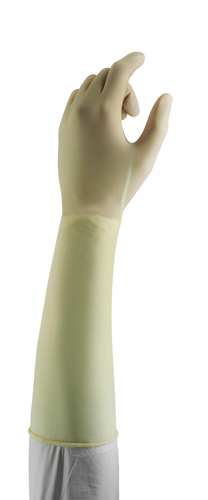 |
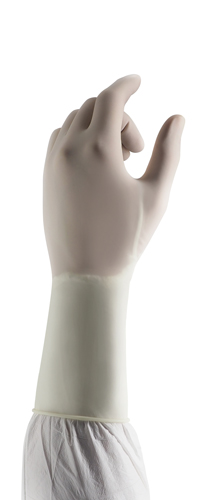 |
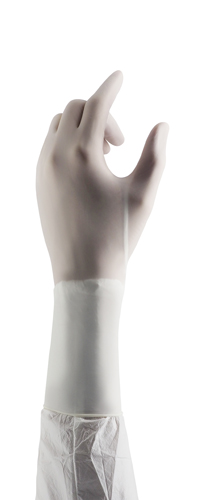 |
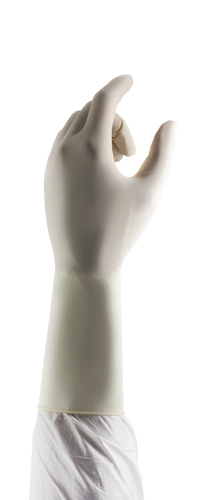 |
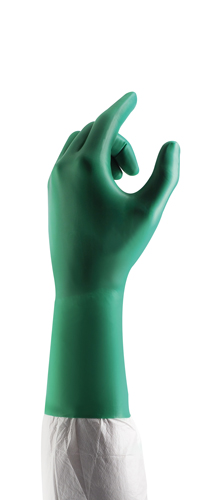 |
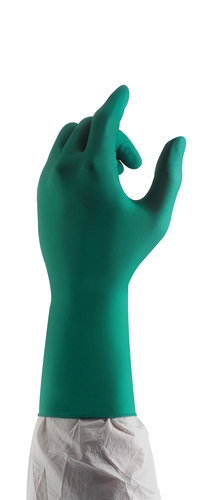 |
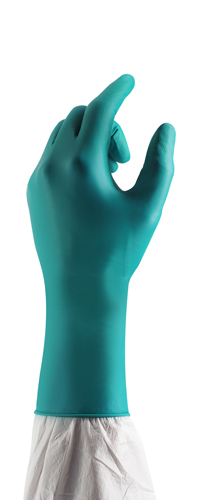 |
| SGL | 67-63-0 | IPA 70% | 7' (C) | 10-30' | >480' (C) | 42' (C) | 240-480' | 30' (C) | 240-480' |
| SGL | 64-17-5 | Ethanol 70% | 30' (C) | 5' (C) | 31' (C) | 30' (C) | 44' (C) | 30' (C) | 240-480' |
Permeation Breakthrough Times (Table 2)
The permeation breakthrough times present in this chart were evaluated according to the ASTM F739 standards. Coloured cells with numbers and symbol (C) correspond to experimentally determined data generated by an accredited laboratory. The rest of the cells correspond to estimations.
| Material | Natural Rubber | Polyisoprene | Nitrile | Neoprene | Neoprene | Nitrile | Nitrile/ Neoprene |
||
| Thickness (mm) | 0.17 | 0.21 | 0.12 | 0.11 | 0.175 | 0.10 | 0.20 | ||
| Brand | BioClean | TouchNTuff | Nitrilite | BioClean | Dermashield | BioClean | Microflex | ||
| Product Group | BLAS, BLA3 | 83-300, 83-500 |
93-401 | BUPS | 73-701, 73-711, 73-721 |
BENS, BJAS, BSAN | 93-260, 93-360 |
||
| Type | CAS | Chemical Name % |  |
 |
 |
 |
 |
 |
 |
| SGL | 67-63-0 | IPA 70% | 5' (C) | 10-30' | 51' (C) | 30-60' | 240-480' | 10-30' | 240-480' |
| SGL | 64-17-5 | Ethanol 70% | 10-30' | < 10' | 30-60' | 10-30' | 30-60' | 10-30'' | 240-480' |
Looking at the test data extracted, we can conclude that natural rubber latex or polyisoprene PPE gloves have a lower resistance towards IPA and Ethanol than neoprene or nitrile.
Interpretation of theoretical test data for alcohols
There can indeed be a perceived “low” resistance of clean (& sterile) PPE gloves versus IPA, looking purely at the published permeation breakthrough times, but the following has to be noted: During the chemical permeation breakthrough test (whether this is according to standards ASTM F739, EN374-3 or EN 16523-1), the challenge chemical is completely enclosed in the test cell, with no other possibility than to permeate through the glove.
Additionally, alcohols used in the test have proven to provide very variable test results.
In practice, when spilled on a glove, or applied on a glove for disinfection, the alcohol will evaporate rather than permeate, because in that setting it is exposed to air and not prevented from evaporating. This means the lab test conditions, in this case, are not necessarily in line with the real application. In practice, neoprene and nitrile gloves will show good behaviour towards alcohols if the alcohol is left to evaporate naturally. However, when there is additional rubbing together of gloved hands after alcohol treatment, it is difficult to predict how this affects the chemical resistance of the glove. It’s important to note the rubbing action could generate particles and thus add an extra contamination risk in the cleanroom.
Conclusion
If sterile PPE gloves are purchased, there is no need to additionally disinfect gloves by applying isopropanol, however this is often part of the standard operating procedure in cleanrooms.
Although alcohols could have a deteriorative effect on the glove materials, this effect will be reduced as long as the gloves are simultaneously exposed to air.
Nitrile gloves and neoprene gloves will generally have better resistance to alcohols compared to natural rubber latex gloves.
We recommend against the rubbing together of gloved hands after the application of alcohol disinfectant, as this could aggravate the chemical deterioration effect, as well as generate particles into the cleanroom environment. We advise applying the alcohol via a spray application and allow to evaporate naturally on the gloves.
SUBSCRIBE TO CRITICAL INSIGHT |


